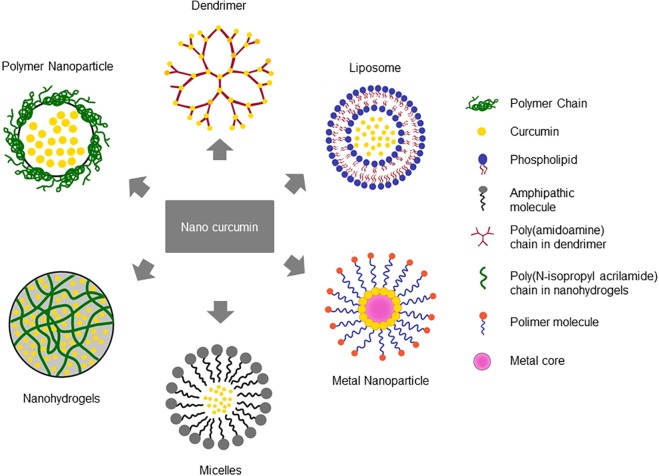
A natural compound from 4,000 years ago help deal with neuropathic pain? Numerous studies have tried to determine if curcumin does indeed have healing powers not thought of centuries ago.
Herbal Medicine: Biomolecular and Clinical Aspects says, “The use of turmeric dates back nearly 4000 years to the Vedic culture in India, where it was used as a culinary spice and had some religious significance….Susruta’s Ayurvedic Compendium, dating back to 250 BC, recommends an ointment containing turmeric to relieve the effects of poisoned food.”
Despite its long history, turmeric and by extension curcumin, modern researchers continue to explore its potential to treat several areas of need.
“Curcumin, the principal curcuminoid found in spice turmeric, has recently been studied for its active role in the treatment of various central nervous system disorders. Curcumin demonstrates neuroprotective action in Alzheimer’s disease, tardive dyskinesia, major depression, epilepsy, and other related neurodegenerative and neuropsychiatric disorders. The mechanism of its neuroprotective action is not completely understood. However, it has been hypothesized to act majorly through its anti-inflammatory and antioxidant properties.”
Despite its numerous successes in laboratory settings, the widespread use is limited due its instability once digested, “Although, curcumin has shown protective action in many disorders of the body, however, its use is limited due to poor oral bioavailability. However, we have demonstrated in our studies that bioavailability of curcumin can be enhanced by combining it with some bioavailability enhancing agents such as piperine.”
Another comprehensive review concludes “there is compelling evidence proved that curcumin plays an essential role” in mitigating pathological pain. The paper cautions “Potential methods of increase the water solubility and bioavailability of curcumin still need to be studied.”
Curcumin also has been tested in a 2018 study from China to see if it has antiviral properties. “Curcumin, an active phenolic agent extract from the Curcuma longa, exhibits excellent anti-cancer, anti-inflammation, and neuroprotective effects. We aimed to investigate the anti-influenza role of curcumin in vitro and in vivo. The effect of curcumin on replication of influenza A virus (IAV) was examined in human lung cancer cell line A549, as well as in a mouse model…Our current study supports the potential of curcumin as a promising treatment against IAV infection, whose effect may be mediated by regulating immune response to prevent injury to the lung tissue.”
A group of researchers in 2019 said curcumin has many beneficial uses medically, but suffers from its low bioavailability in the human body.
“Numerous studies have shown that curcumin possesses a wide spectrum of biological and pharmacological properties, acting, for example, as anti-inflammatory, anti-angiogenic and anti-neoplastic, while no toxicity is associated with the compound. Recently, curcumin’s antiviral and antibacterial activity was investigated, and it was shown to act against various important human pathogens like the influenza virus, hepatitis C virus, HIV and strains of Staphylococcus, Streptococcus, and Pseudomonas. Despite the potency, curcumin has not yet been approved as a therapeutic antiviral agent.”
Laboratory tests using test tubes, in vitro, show curcumin’s promise, but when tried on living organisms, in vivo, efficacy often suffered. Two studies using mice had some success.
“Besides acting directly antiviral, recent in vivo studies showed that curcumin treatment reduces lung inflammation due to IAV infection in mice and increases the immune response toward IAV in turkeys (Umar et al., 2016; Han et al., 2018).”
Given how treatment with curcumin could help fighting viruses, the authors point out the barriers to its wide adoption.
“Despite its excellent tolerability with no or minimal toxicity even at high oral doses of up to 12 g/day, its poor bioavailability leads to only low serum concentrations, limiting the exploitation of its potentially valuable therapeutic effects (Cheng et al., 2001; Lao et al., 2006). Curcumin’s low bioavailability can be explained by its insolubility in water at neutral pH and the facts that it degrades or crystallizes in alkaline and acidic solutions, respectively (Tønnesen and Karlsen, 1985; Kharat et al., 2017). In human blood curcumin is more stable with a half-life of approximately 8 h (Wang et al., 1997). However, the major part of orally administered curcumin never reaches the blood, as it is poorly absorbed from the intestine and directly discharged again (Holder et al., 1978; Wahlström and Blennow, 1978). In addition, curcumin taken up into the blood is rapidly metabolized, conjugated in the liver and excreted in the feces (Holder et al., 1978; Ravindranath and Chandrasekhara, 1981-1982), therefore it has limited systemic bioavailability.”
Nanocarrier-curcumin systems, as depicted below, have been tried, again with disappointing results.

“But still, after entering the body, the carriers are rapidly taken up by the liver and spleen, leading to a relatively short circulation time. Moreover, e.g., nanoemulsions also contain multiple surfactants, which can lead to toxicity. However, due to the great potential benefit in therapy, the development and refining of curcumin-nanocarrier formulations for the treatment of various diseases is still ongoing.”
With further trials and combinations on curcumin delivery methods may yield a usable solution for this versatile molecule.